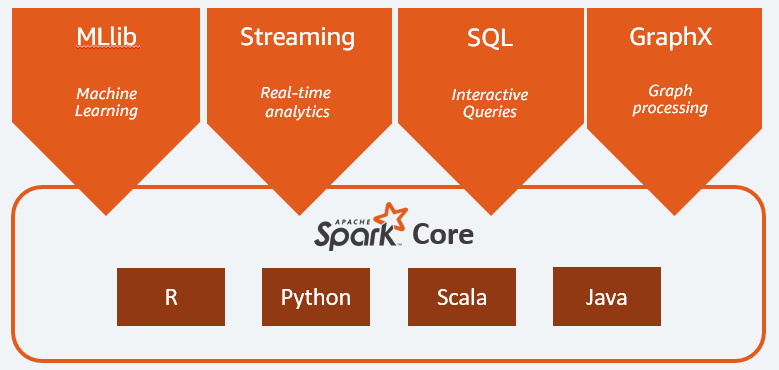Python is an immensely popular programming language, and when it comes to processing large datasets, PySpark stands out as a powerful tool. Whether you’re a data enthusiast or a seasoned developer looking to dive into the world of big data processing, this guide will help you get started with PySpark.
What is PySpark?
PySpark is the Python library for Apache Spark, an open-source, distributed computing system that excels in processing vast amounts of data quickly and efficiently. It provides APIs in several languages, including Python, making it accessible to a wide range of developers.
Installation
Before we dive into PySpark, you need to have Apache Spark installed on your machine. Follow these simple steps:
- Install Java: PySpark requires Java, so make sure you have it installed on your system.
- Download Apache Spark: Visit the official Apache Spark website (https://spark.apache.org/downloads.html) and download the latest version. Extract the downloaded file to your preferred location.
- Set Environment Variables: Set the
SPARK_HOMEandHADOOP_HOMEenvironment variables to point to the Spark and Hadoop directories, respectively. - Install PySpark: You can install PySpark using pip:
pip install pysparkYour First PySpark Code
Now that you have PySpark installed, let’s write a simple PySpark script to get a taste of its capabilities. Open your Python editor or Jupyter Notebook and follow along.
# Import the necessary libraries
from pyspark.sql import SparkSession
# Create a SparkSession
spark = SparkSession.builder.appName("MyFirstPySparkApp").getOrCreate()
# Create a DataFrame
data = [("Alice", 25), ("Bob", 30), ("Charlie", 35)]
columns = ["Name", "Age"]
df = spark.createDataFrame(data, columns)
# Show the DataFrame
df.show()
# Stop the SparkSession
spark.stop()In this code:
- We import the
SparkSessionclass, which is the entry point for using PySpark. - We create a SparkSession named “MyFirstPySparkApp.”
- We create a simple DataFrame containing name and age data.
- We display the DataFrame using the
show()method. - Finally, we stop the SparkSession to release resources.
Running Your PySpark Code
To run this code, save it in a .py file and execute it using Python. Ensure that your Spark installation is correctly configured, and you have Java installed.
Following will be the output
+-------+---+
| Name|Age|
+-------+---+
| Alice| 25|
| Bob| 30|
|Charlie| 35|
+-------+---+
To read data from a CSV file and apply aggregation on a PySpark DataFrame, you can follow these steps:
Step 1: Import the necessary libraries
Start by importing the required libraries, including SparkSession for initializing PySpark and functions for aggregation functions like sum, avg, etc.
from pyspark.sql import SparkSession
from pyspark.sql import functions as FStep 2: Initialize a SparkSession
Create a SparkSession, which serves as the entry point to PySpark.
spark = SparkSession.builder.appName("CSVAggregation").getOrCreate()Step 3: Read the CSV file into a DataFrame
Use the read method to read the CSV file into a PySpark DataFrame. Replace "your_file.csv" with the path to your CSV file.
df = spark.read.csv("your_file.csv", header=True, inferSchema=True)header=Truespecifies that the first row in the CSV file contains column headers.inferSchema=Trueattempts to infer the data types of the columns automatically.
Step 4: Apply Aggregation
Now, you can apply aggregation functions to the DataFrame. Here’s an example of how to calculate the sum and average of a numerical column, such as “Amount”:
# Calculate the sum and average of the "Amount" column
sum_amount = df.agg(F.sum("Amount").alias("TotalAmount"))
avg_amount = df.agg(F.avg("Amount").alias("AverageAmount"))
# Show the results
sum_amount.show()
avg_amount.show()In this code, we use agg() to apply aggregation functions to the DataFrame. We use the alias() method to provide meaningful names to the resulting columns.
Step 5: Display the Results
Finally, display the results of the aggregation:
# Show the results
sum_amount.show()
avg_amount.show()
Step 6: Stop the SparkSession
Don’t forget to stop the SparkSession to release resources when you’re done:
spark.stop()Here’s the complete code:
from pyspark.sql import SparkSession
from pyspark.sql import functions as F
# Initialize a SparkSession
spark = SparkSession.builder.appName("CSVAggregation").getOrCreate()
# Read the CSV file into a DataFrame
df = spark.read.csv("your_file.csv", header=True, inferSchema=True)
# Calculate the sum and average of the "Amount" column
sum_amount = df.agg(F.sum("Amount").alias("TotalAmount"))
avg_amount = df.agg(F.avg("Amount").alias("AverageAmount"))
# Show the results
sum_amount.show()
avg_amount.show()
# Stop the SparkSession
spark.stop()



